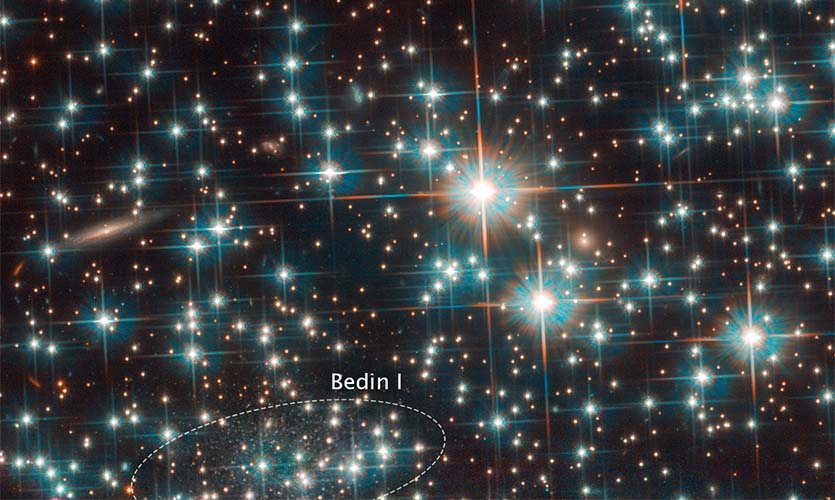Discovery of a New Galaxy in Cosmic Neighbourhood

The universe is very cluttered. Myriad island cities of stars, the galaxies, form a backdrop tapestry. Much closer to home are nebulae, star clusters, and assorted other foreground celestial objects that are mostly within our Milky Way galaxy. Despite the vastness of space, objects tend to get in front of each other.
This happened when astronomers, including Professor Maurizio Salaris from the Astrophysics Research Institute at Liverpool John Moores University, used the Hubble Space Telescope to photograph the globular star cluster NGC 6752 (located 13,000 light-years away in our Milky Way's halo). In a celestial game of "Where's Waldo?", Hubble's sharp vision uncovered a never-before-seen dwarf galaxy located far behind the cluster's crowded stellar population. The loner galaxy is in our own cosmic backyard, only 30 million light-years away (approximately 2,300 times farther than the foreground cluster).
Professor Maurizio Salaris worked on the theoretical analysis, determining the approximate age and chemical composition of the stars populating this new galaxy. This allowed the team to work out its distance.
The object is classified as a dwarf spheroidal galaxy because it measures only around 3,000 light-years at its greatest extent (barely 1/30th the diameter of the Milky Way), and it is roughly a thousand times dimmer than the Milky Way.
Because of its 13-billion-year-old age, and its isolation — which resulted in hardly any interaction with other galaxies — the dwarf is the astronomical equivalent of a living fossil from the early universe.
The science team's results will be published online January 31, 2019, in the Monthly Notice of the Royal Astronomical Society Letters.
The Hubble Space Telescope is a project of international cooperation between NASA and ESA (European Space Agency). NASA's Goddard Space Flight Center in Greenbelt, Maryland, manages the telescope. The Space Telescope Science Institute (STScI) in Baltimore, Maryland, conducts Hubble science operations. STScI is operated for NASA by the Association of Universities for Research in Astronomy in Washington, D.C.
This is a Hubble Space Telescope image of a concentration of stars within the globular cluster NGC 6752. Hidden among the stars is an image of a background galaxy that is much farther away. The diminutive galaxy, named by its discoverers as Bedin 1, measures only around 3,000 light-years at its greatest extent — a fraction of the size of the Milky Way. Not only is it tiny, but it is also incredibly faint. These properties led astronomers to classify it as a dwarf spheroidal galaxy that is as old as the universe.


